

Project Name: Perdido Key Coastal Demonstration Garden
Awardee: Escambia County Natural Resources
Amount Awarded: $10,450
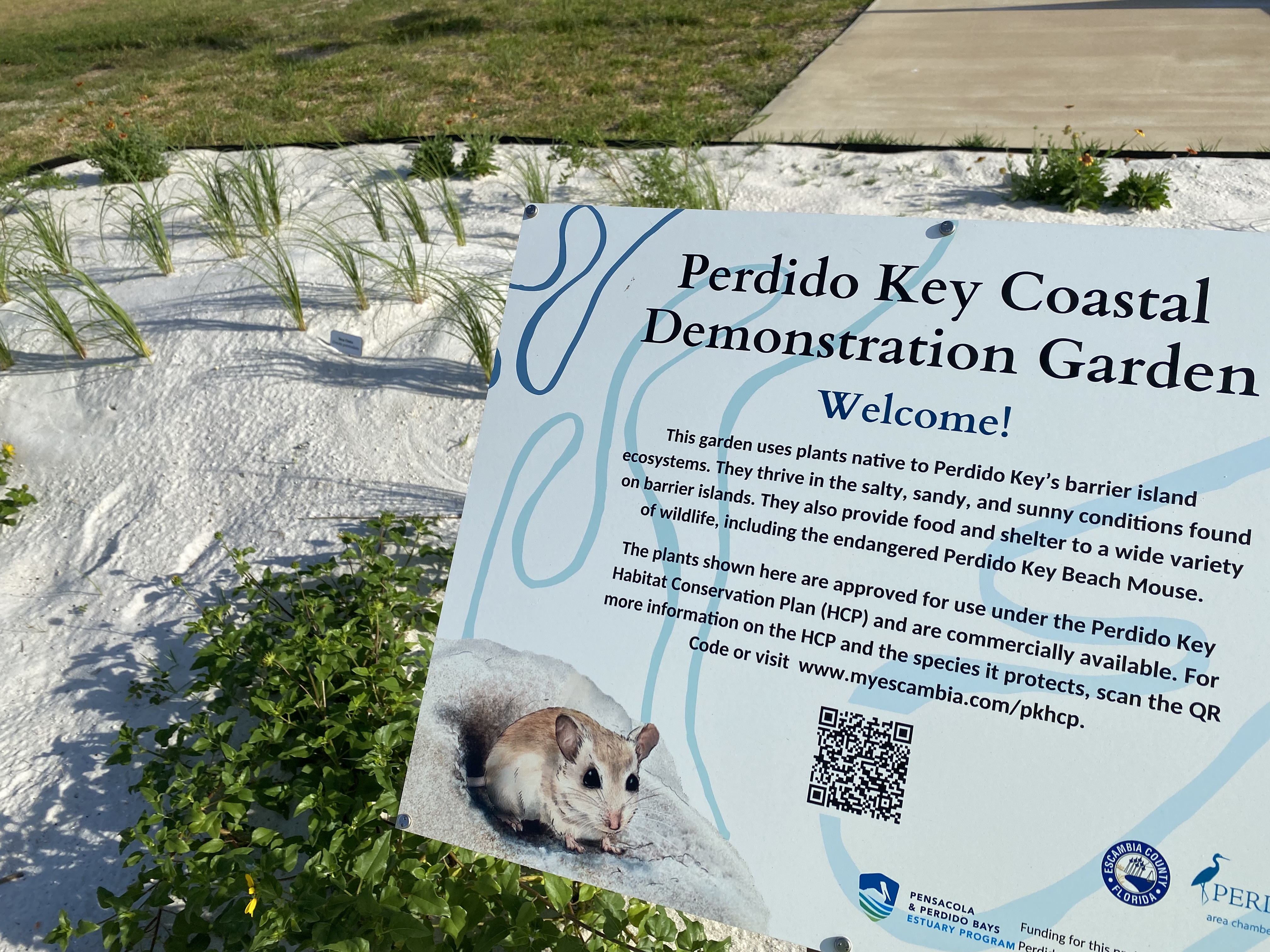
Escambia County installed a coastal demonstration garden adjacent to the Perdido Key Community Center. The Perdido Key Area Chamber of Commerce, supported by Escambia County, is currently working to turn this under-utilized green space adjacent to the building into a small park with amenities for pedestrians and cyclists traveling along the future Perdido Key Multi-Use Path. The garden provides visitors and residents examples of Florida Friendly Landscaping techniques with native plants. A ribbon-cutting was held at the garden on June 8th, 2022 (World Oceans’ Day). Activities included native landscaping and development of educational signage. A native plant landscaping guide was also created in partnership with UF/IFAS Extension to provide a resource for property owners on landscaping best management practices in sensitive environments, with particular focus on the endangered Perdido Key Beach Mouse.
Project Name: Fish communities on remnant and restored oyster reefs of East and Escambia Bays: a baseline for assessing restoration success
Awardee: University of South Alabama
Amount Awarded: $22,850
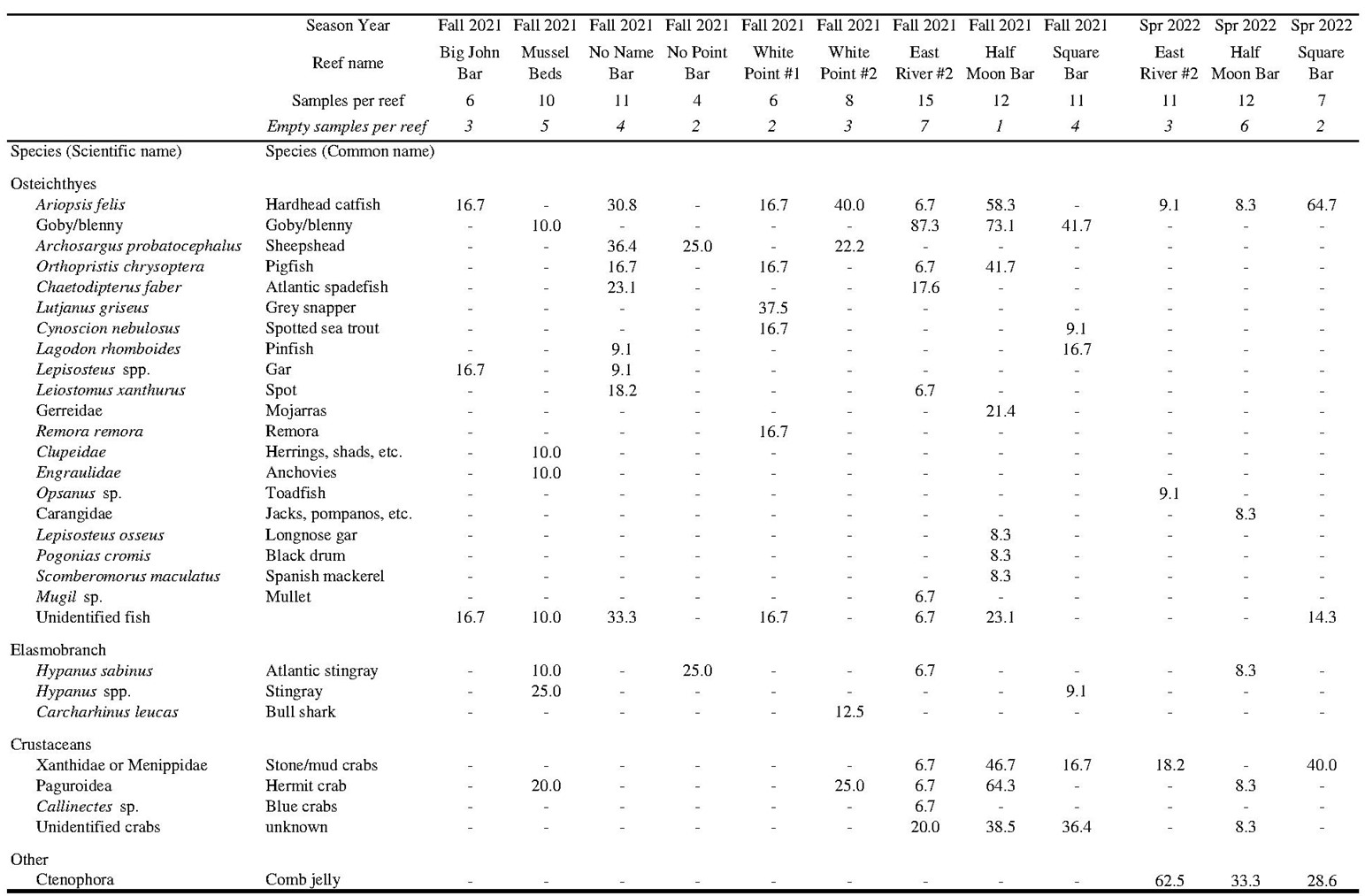
The occurrence of animals in underwater video surveys of oyster reefs in East Bay, Pensacola, Florida, during Fall 2021 and Spring 2022. Values represent the % of total videos by site in which each taxon was observed. Sample size (number of replicate video samples) is provided below site names, as well as the number of videos in which no animals were recorded (empty samples). |
Healthy oyster reefs provide a variety of ecosystem services that benefit coastal communities and beyond. They support oyster fisheries, improve water quality, and provide important habitat for a diversity of species, including many fisheries species of great social and economic importance. Significant oyster restoration projects continue in the Pensacola Bay System, and the enhancement of fish habitat is a key goal of many projects. However, sampling fish communities on oyster reefs is challenging. This project used underwater video to describe the fish communities on remnant and restored oyster reefs in East and Escambia Bays.
By describing and comparing the fish communities among oyster reefs with different restoration status, depth, substrate type, and location within the bays, the drivers of variation in fish community composition among reefs and across the bays were identified. The success of existing restoration projects at enhancing fish habitat was evaluated as a critical component of guiding future restoration efforts that wish to maximize fish habitat benefits and returns on restoration investment. The findings provide a baseline from which to monitor fish communities in the bays into the future. Understanding the current fish communities and their responses to restoration efforts will help maximize the health of the Bay's ecosystems, and fishing opportunities for coastal communities around Pensacola Bay.
Project Name: EscaRosa OysterCorps
Awardee: Franklin's Promise Coalition, Conservation Corps of the Forgotten and Emerald Coasts
Amount Awarded: $49,999
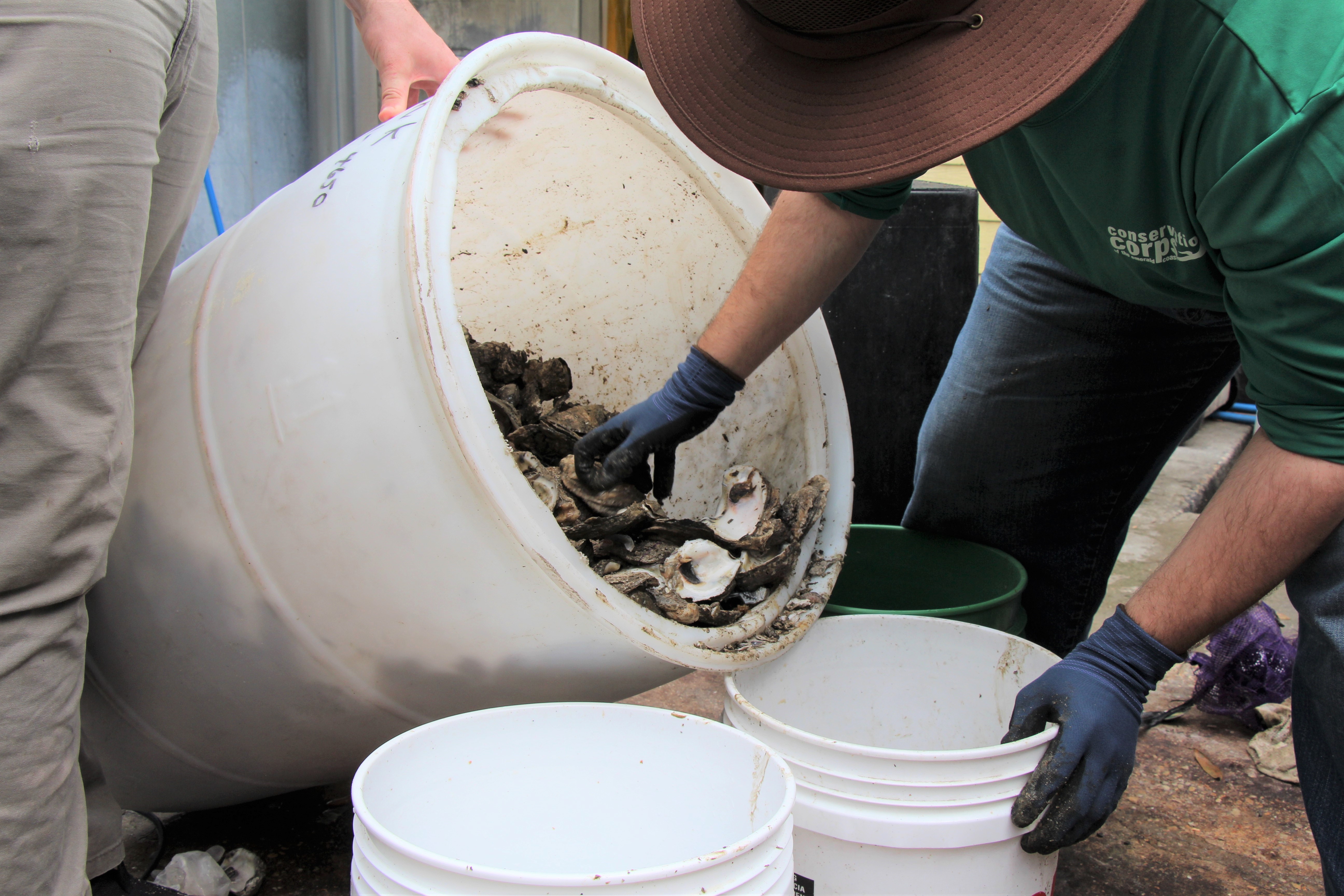
The OysterCorps Project expanded existing programs in Santa Rosa County and worked to enhance and protect coastal resources in Pensacola and Perdido Bays by meeting the priorities of improving water quality, habitat restoration, promoting community resilience, and building awareness of the watershed. The project funds helped expand Franklin’s Promise Coalition’s (FPC) existing award with Santa Rosa County to expand the oyster shell collection and restoration efforts by increasing shell collection and utilizing shell that has already been collected throughout the Pensacola and Perdido Bays.
This project addressed the protection and enhancement of coastal resources and improvement of water quality through the collection and recycling of oyster shells, the growth and care of salt marsh plants, implementation of living shoreline and marsh restoration projects, and the education of participants through hands-on work experience. The shells collected and new salt marsh plants will be used in shoreline restoration projects in the Pensacola and Perdido Bay systems, such as the Santa Rosa County Floridatown Living Shoreline Project. Shell recycled during the first year of the Santa Rosa Oyster Shell Recycling Program will be utilized to build reef structures (bags, mattresses, balls, etc.). Members had the opportunity to participate in active restoration, project design, and material construction. The project also included the incorporation of local Pace High School’s Marine Biology class to teach students how to care for and plant marsh grasses that aid in the restoration of shorelines.
Project Name: Estuary Exhibit
Awardee: Pensacola MESS Hall
Amount Awarded: $11,627
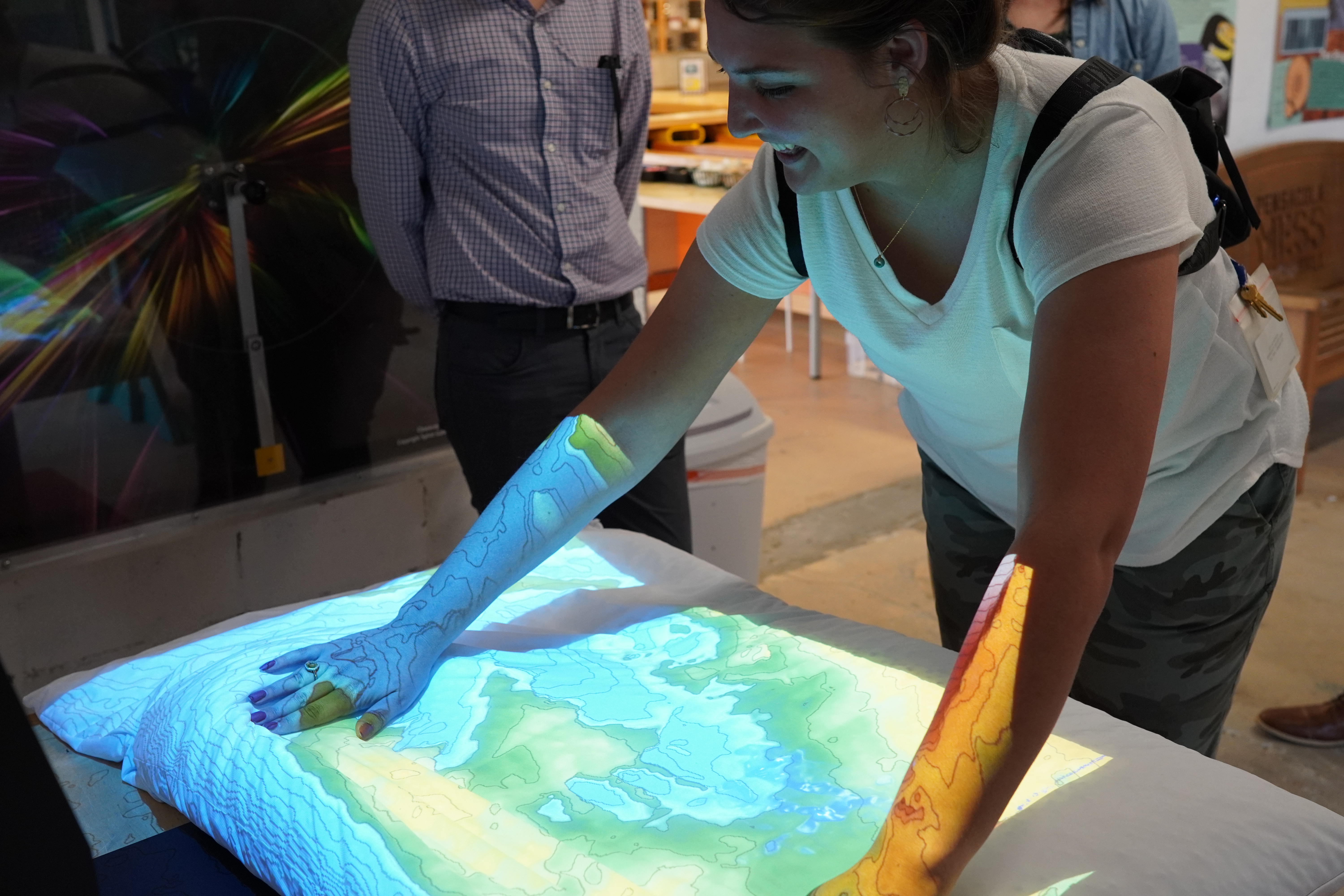
The Pensacola MESS Hall Estuary Exhibit was created to engage visitors in hands-on discovery about the science and social issues surrounding our local watershed. The activities invite active, prolonged engagement that encourages learners to ask their own questions and make their own discoveries. It also includes signage aimed primarily at adult learners that emphasizes important issues in our local environment. The exhibits focus on life on land, life in water, and our changing earth, from erosion to sea-level rise. The activities incorporated math, engineering, and science, as well as connect with other fields like economics and ethics.
In addition to the built exhibits, monthly special programs were scheduled for families with elementary-aged children, underserved students, and adults. The interactive adult program focused on sea-level rise and engaged adults in critical thinking about prioritizing community resilience. All of the programs included facilitated hands-on activities and local experts were invited to share their knowledge in these programs.
Project Name: Fischer Landing Master Plan Study
Awardee: Town of Century
Amount Awarded: $45,210
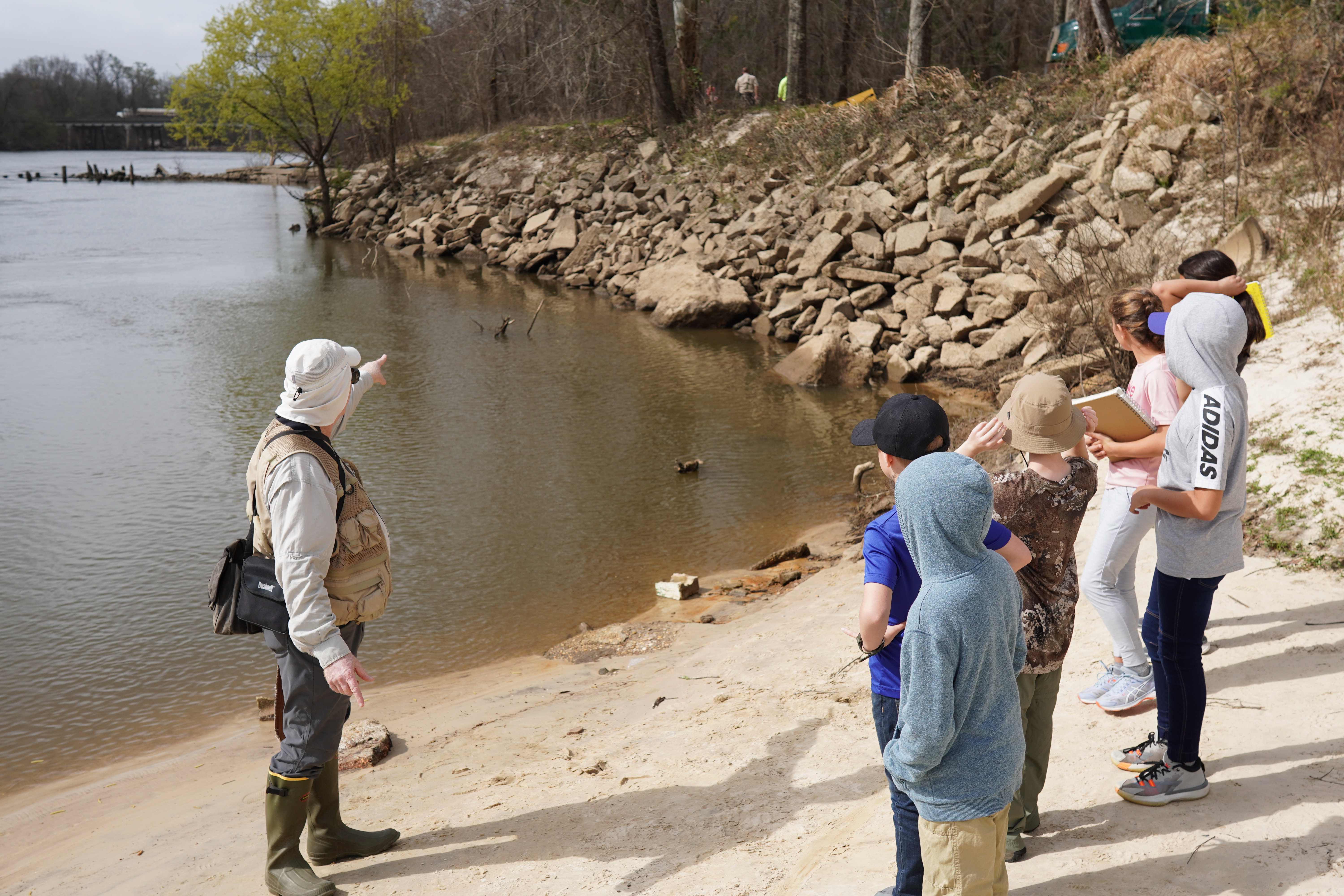
Fischer Landing is a 5-acre park, located along the northern reaches of the Escambia River and is named for the Town of Century Councilman, Jerry Fischer, who worked diligently during and after his elected service to see the land acquired and funding secured for the boat ramp and park. This project aimed to provide an update to the existing Fischer Landing Master Plan including an updated Master Site Plan, Management Plan, Educational Signage, and Sedimentation Study.
This project designed and installed educational signage, identified potential on-site and off-site sources of sedimentation and accretion, and created an inventory of on-site natural systems with the development of site-specific management plans. The project delivered a framework to understand the sediment loading in the upper reaches of the Escambia River and provided improved habitats by reducing the presence of invasive species while updating knowledge of the presence of protected species. The project also included the incorporation of a local elementary school, St. Paul’s Catholic School, through an educational field trip explaining how upstream issues can impact downstream habitats.
Project Name: Santa Rosa County Watershed Awareness Signage and Stormwater Drain Marking Project
Awardee: Santa Rosa County
Amount Awarded: $16,573
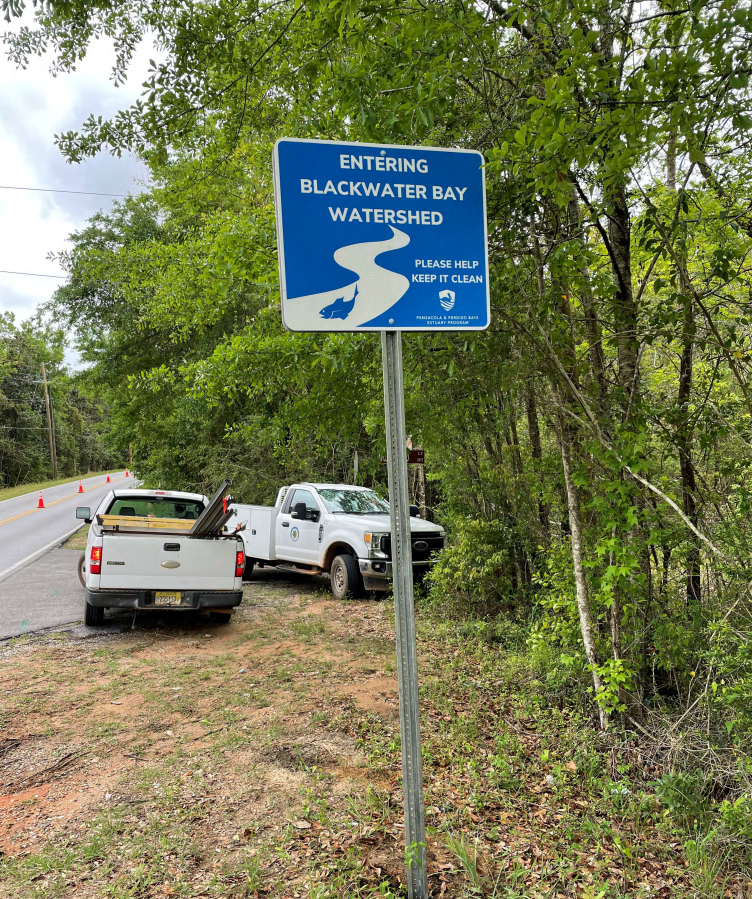
Santa Rosa County developed a watershed educational awareness program that builds upon 41 existing watershed boundary signs throughout the nine identified watersheds of the County. The signs were originally installed by a grant from the Bay Area Resource Council in 2008. The signs in their current condition were in need of being replaced due to their poor condition. In collaboration with the local citizen support group, the Santa Rosa County Watershed Committee, and the County GIS Department, have ground-truthed all 41 watershed boundary signs. In addition, the project proposed the placement of 225 identification medallions onto specifically selected storm drains within each watershed indicating where they flow into local waterways. This provides watershed educational awareness to the public to take better care of its resources and help solve problems like dumping of household garbage, old appliances, and yard waste into streams, improper use and disposal of chemicals, and littering.
The project designed, purchased, replaced, and installed all 41-watershed boundary signs and plans to place medallions on 225 selected storm drains within the nine identified watersheds in the County.
Project Name: Historical Ecology of Pensacola and Perdido Bays: Using the Past to Protect the Future of Our Bays
Awardee: University of West Florida
Amount Awarded: $43,461
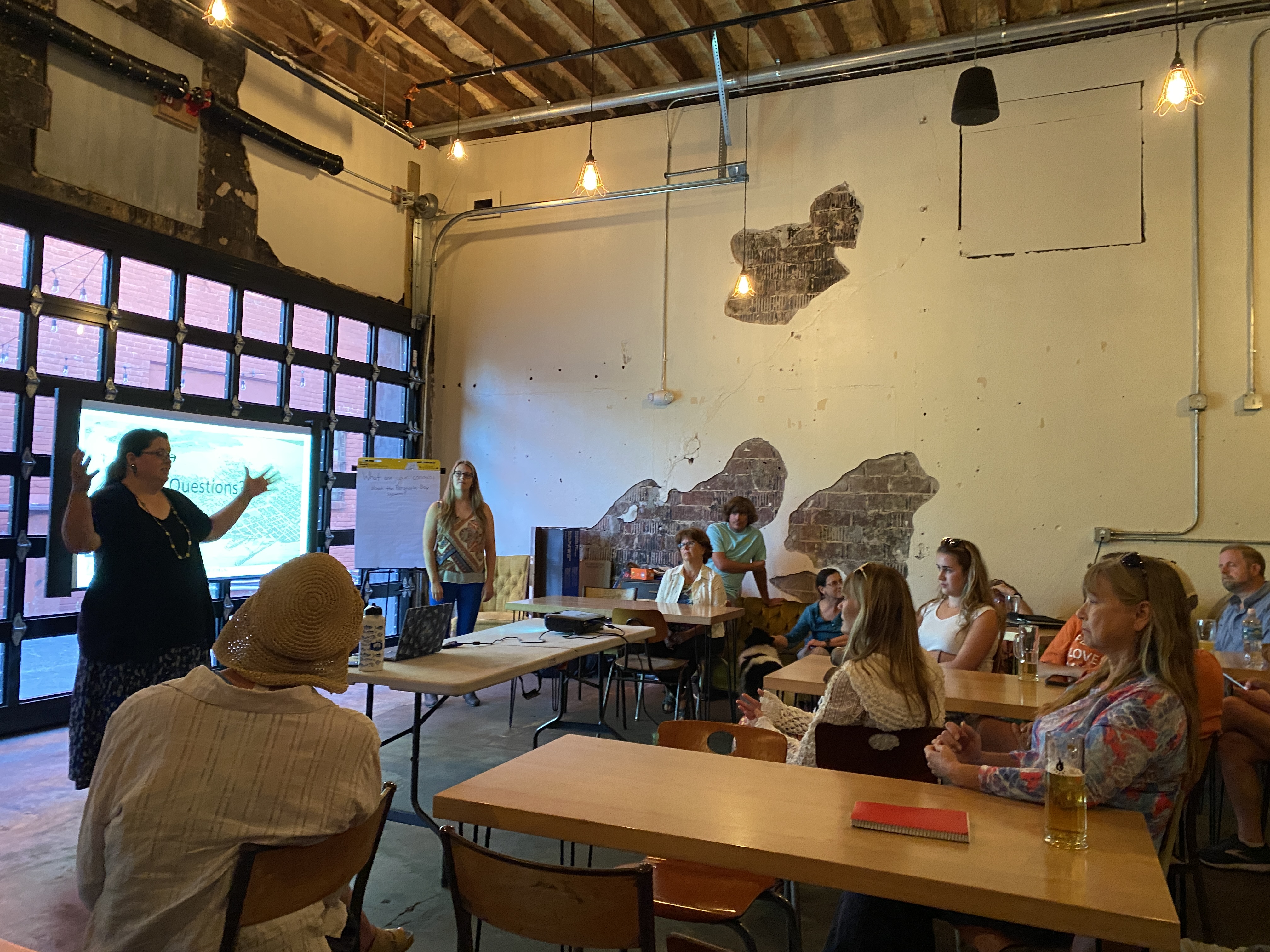
Historical ecology is an interdisciplinary field focused on the interaction between society and the environment and the consequences of those interactions on the landscape and resources. Applied historical ecology uses historical knowledge and applies it to ecosystem management (e.g., habitat restoration targets). This historical ecology project addressed the following questions: What was the historical coverage of wetlands, oysters, and other key habitats in the Pensacola and Perdido Bay systems? How have those habitat distributions changed over time? Is there historical documentation of oysters in Perdido Bay? Was the distribution of seagrass within the system similar to where it’s found today, or has that changed over time? How has urban development altered hydrology and habitat change?
Historical records were sourced from local historical societies, private collections, and other archives including the UWF archives. Using documents, narrative accounts, maps, and photos the historical extent of key habitats during different time periods were pieced together to document a timeline of changes. Maps and photos were digitized, georeferenced, classified based on habitats, and then calculated for coverage and percent change over time.
To increase community awareness of the importance of our estuaries to shaping our local history, two public seminars were hosted to increase community awareness of the importance of estuaries to shaping the history of the Pensacola & Perdido Bay systems. Educational videos about the public lecture series and interactive ArcGIS StoryMaps were also created. A diverse group of community members were engaged in these conversations and explained the roles that they can play in shaping the future sustainability of the Pensacola and Perdido Bay systems.
Project Name: Citizen Science Water Quality and Habitat Monitoring Network: Community Deployment and Network Sustainability
Awardee: Institute for Human and Machine Cognition
Amount Awarded: $49,830
The central goal of the project is to create a watershed information and engagement system, generated by the people and stakeholders of the watershed that is accessible to citizen scientists. The deployment phase was the next step to implementing the working software ecosystem for use by waterfront and adjacent property owners, and the general public at park access points.
The project aimed to deploy and release to the community the previous citizen science pilot software platform/system. The pilot supports teaming citizens and their observations and phones for Pensacola water and habitat monitoring while providing approaches of reporting data to help form citizen connections, as well as inform and educate citizens within the Bayou Texar and Pensacola Bay watershed.
Citizens will have access to phone-based water spectral fingerprint image captures, complementary observational data, data visualizations, GIS, and the community resilience information system (web-based data portal, twitter based reporting and augmented waterside augmented reality utility) through this project. Collaboration tools will be added to the software to facilitate citizen teamwork. The project also aimed to demonstrate an autonomous adaptive sampling capability using an AUV from docks along the waterway that is triggered by satellite-derived data. The project devised a plan for expansion into another waterway (Bayou Chico) and a crowdsource model for Operation and Maintenance (O&M) Sustainability.